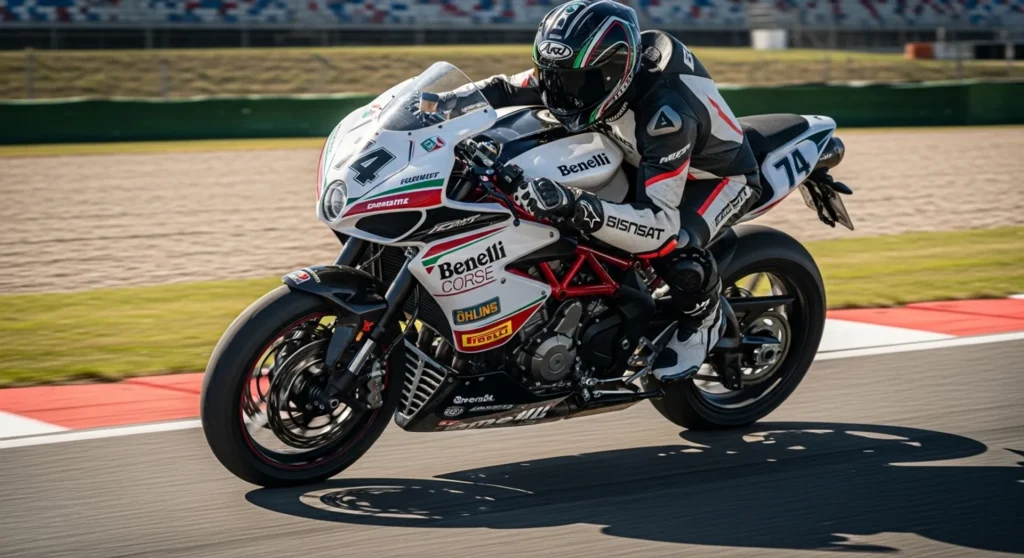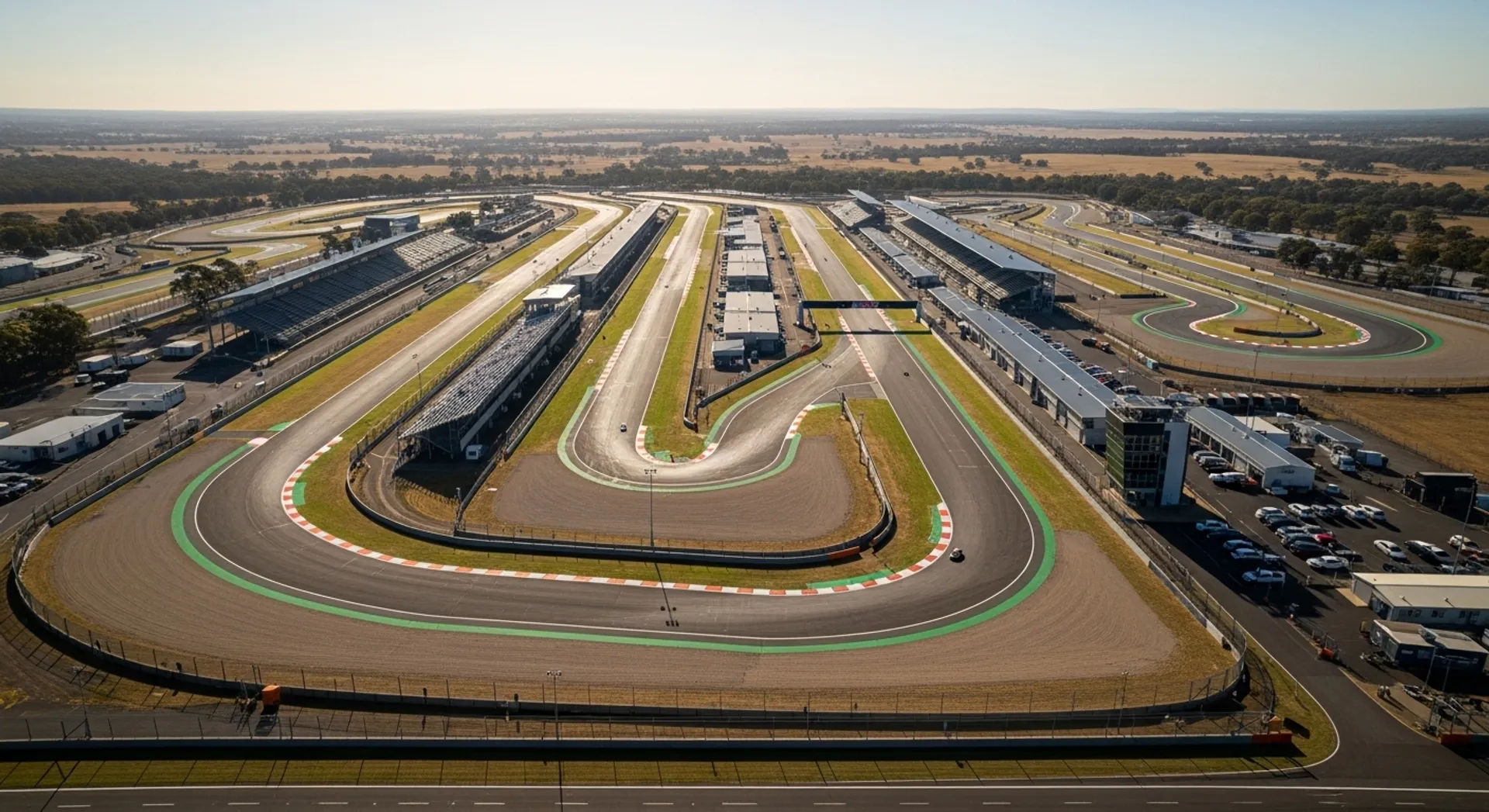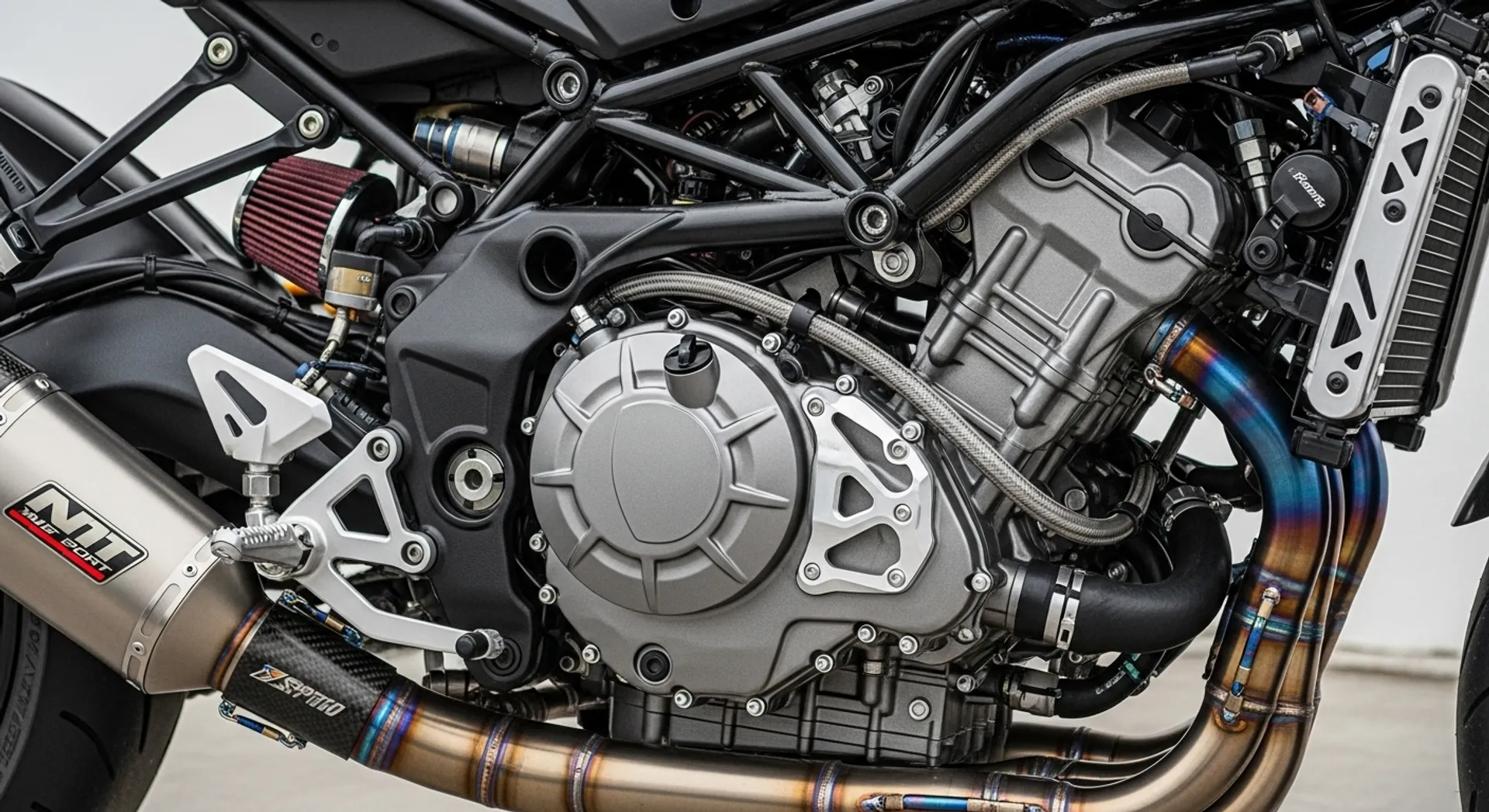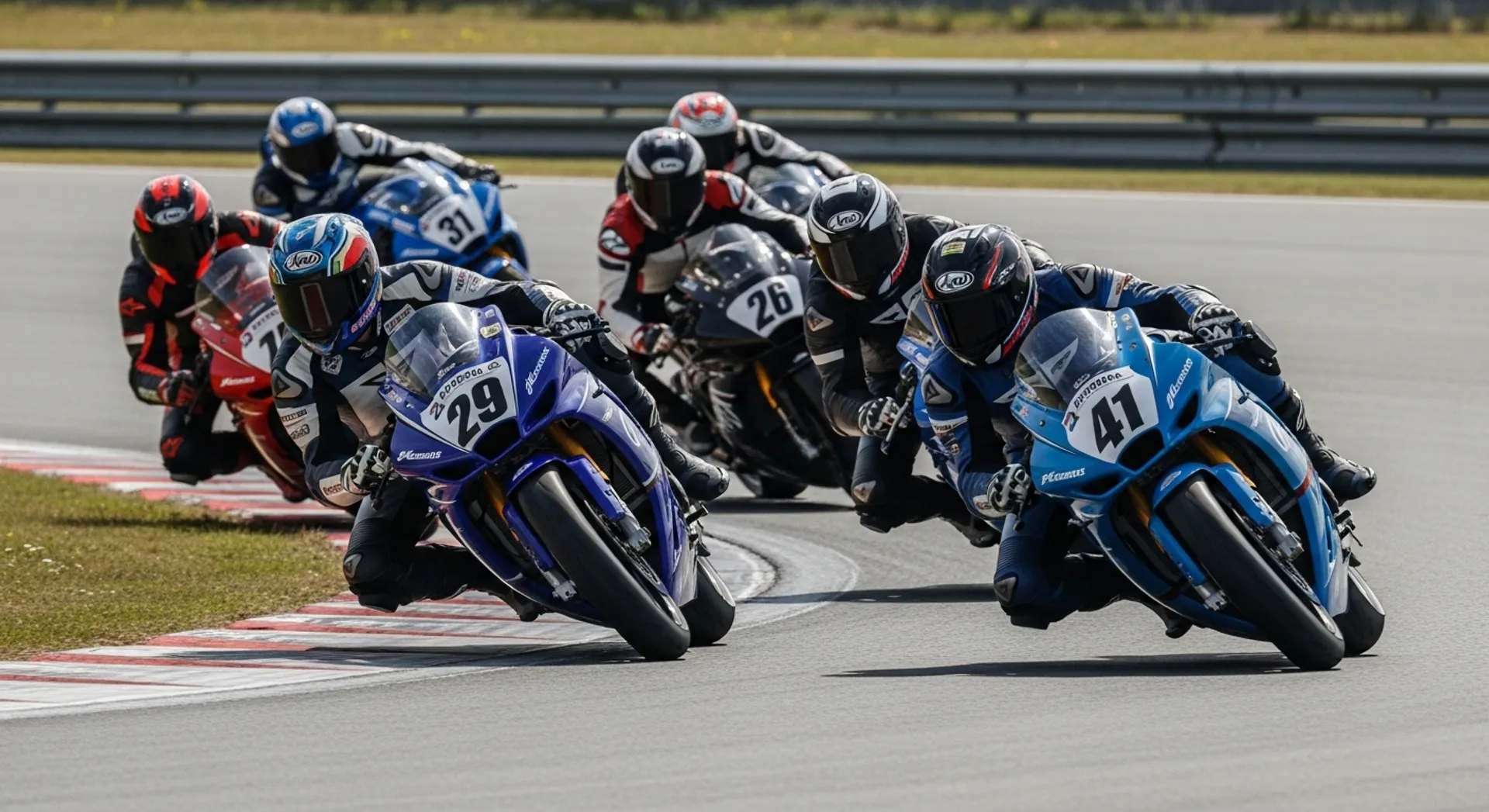The legendary Italian marque Benelli has announced its return to competitive racing in Australia with an impressive debut at Eastern Creek Raceway during the opening round of the Australian Naked Bike Championship series. Despite facing extreme temperatures exceeding 50 degrees Celsius, the Benelli TNT Sport demonstrated remarkable potential, posting competitive lap times and finishing on the podium in its very first racing weekend on Australian soil.
The return marks a significant moment for Benelli enthusiasts in Australia and signals the Italian manufacturer’s serious commitment to establishing a competitive presence in the growing naked bike racing category. With three riders campaigning TNT Sport machines and achieving encouraging results despite the bike still being in early development stages, Benelli has laid a solid foundation for future success.
Eastern Creek: Baptism by Fire
The choice of Eastern Creek Raceway for Benelli’s Australian racing debut proved particularly challenging. The circuit, located in Sydney’s western suburbs, is known for its fast, flowing layout that rewards power and stability. However, the weekend’s extreme conditions — with track temperatures soaring above 50 degrees Celsius — tested both machines and riders to their absolute limits.
These brutal conditions provided an unintentional but valuable stress test for the TNT Sport. High temperatures challenge every aspect of a motorcycle’s performance: engine cooling systems work overtime, tire compounds reach critical operating temperatures, brake systems face increased fade, and rider fitness becomes a limiting factor. That the Benelli machines not only survived but competed effectively under these conditions spoke volumes about their fundamental engineering.
The Australian Naked Bike Championship
The Australian Naked Bike Championship has grown into one of the country’s most popular motorcycle racing series. The category’s appeal lies in its accessibility and relevance to street riders — the bikes racing are recognizably related to machines available in showrooms, unlike the heavily modified machines in premier classes.
Naked bike racing emphasizes rider skill and chassis dynamics rather than pure horsepower or aerodynamic efficiency. Without fairings to slice through the air, riders must work harder to maintain high speeds, placing premium value on corner speed, braking performance, and mechanical grip. This format perfectly suited Benelli’s approach with the TNT Sport, a machine designed to excel through handling precision and strong midrange power delivery.
The Benelli TNT Sport: Early Development Shows Promise
The racing debut came while the Benelli TNT Sport remained in early stages of development — making the weekend’s results all the more impressive. Racing serves as the ultimate development tool, subjecting machines to stresses and demands impossible to replicate in street riding or even aggressive track days. Every component faces scrutiny under competition conditions, revealing strengths to exploit and weaknesses to address.
Performance Characteristics Emerge
Even in preliminary form, the TNT Sport displayed characteristics that excited both riders and team personnel. The bike demonstrated plenty of torque and power, crucial attributes for naked bike racing where strong acceleration out of corners and robust midrange performance matter more than peak horsepower figures. The ability to “run easily at the top end of the field” confirmed the TNT Sport possessed the fundamental performance necessary to compete at the championship’s highest level.
The weekend’s fastest lap time of 1:36.9 minutes provided concrete evidence of the bike’s potential. This time placed the Benelli firmly among the front-runners, proving it could match lap times with more established competitors. Achieving such performance while still in development suggested significant improvement potential remained untapped.
The Riders: Experience Meets Enthusiasm
Benelli’s Australian racing effort featured three riders from two teams, bringing different experience levels and perspectives to the development process. This multi-rider approach accelerated learning and provided valuable comparative data for tuning and setup optimization.
Jon Cartwright: Reigning Champion Returns
Jon Cartwright, the reigning Australian Naked Bike Champion, brought invaluable experience and a winner’s mentality to the TJ’s Performance Benelli team. His championship credentials meant he could immediately provide informed feedback comparing the TNT Sport against the competition. Cartwright’s ability to qualify on the front row with a 1:38.4 lap time in his first session aboard the Benelli demonstrated both his skill and the bike’s immediate competitiveness.
Cartwright expressed being “delighted and surprised at how quickly the bike has developed,” high praise from a rider with intimate knowledge of what makes naked bikes fast. His podium finish in the first race — third overall and second in class — exceeded expectations for a debut outing and validated Benelli’s decision to enter competition.
Bill Middleton: Proving Age Is Just a Number
At 53 years old, Bill Middleton represented the passionate privateer racers who form the backbone of club racing worldwide. His participation aboard a TJ’s Performance Benelli TNT Sport demonstrated the bike’s accessibility to riders of varying skill levels and physical capabilities. Qualifying in 15th place with a 1:48.5 lap time, Middleton provided valuable development feedback from a different perspective than the championship-contending Cartwright.
Middleton’s consistency across the three races — finishing eighth, sixth, and eighth in the Naked Bike class — showed the TNT Sport’s reliability and user-friendly character. For a bike in early development facing extreme conditions, trouble-free completion of multiple races represented a significant achievement.
Adrian Pierpoint: Ultimate Motorcycles Entry
Adrian Pierpoint, racing for Ultimate Motorcycles aboard another TNT Sport, qualified strongly with a 1:40.5 lap time that placed him on the second row of the grid. His performance demonstrated the bike’s potential across multiple teams and setups, proving the TNT Sport’s competitiveness wasn’t solely dependent on TJ’s Performance preparation.
Pierpoint’s fourth-place finish in race one and third-place result in race three bracketed an unfortunate retirement in race two due to a minor electrical fault — exactly the type of teething issue that early development racing helps identify and resolve.
Race-by-Race Analysis: A Weekend of Progress
The three-race format provided an excellent structure for evaluating and improving the Benelli TNT Sport’s performance across the weekend. Each race revealed new information and allowed teams to make adjustments between sessions.
Race One: Immediate Competitiveness
Saturday’s opening race delivered the most encouraging result. Cartwright’s second-place position on the first lap announced that Benelli had arrived ready to compete immediately. Even more impressively, he led the combined Naked Bike and Pro Twins field on lap three — a stunning achievement for a debut outing that proved the TNT Sport could run at the absolute front of the field.
His eventual third overall and second in class finish, combined with a 1:38.4 lap time matching his qualifying performance, demonstrated consistency and race pace rather than just a single fast lap. Pierpoint’s fourth-place finish and Middleton’s eighth provided additional data points confirming the bike’s competitive baseline performance.
Race Two: Fastest Lap Achieved
Sunday morning’s second race saw Cartwright find his rhythm and extract maximum performance from the TNT Sport. His 1:36.9-minute lap — the fastest time of the entire weekend — proved the bike’s absolute pace when conditions and setup aligned perfectly. This time represented genuine front-running performance, not just solid midfield results.
Fourth overall and third in class might have seemed a slight step back from race one’s podium, but the dramatically improved lap time told the real story: the team was learning to unlock the TNT Sport’s potential. Middleton’s sixth-place finish showed continued improvement, while Pierpoint’s retirement due to an electrical fault on lap six provided valuable diagnostic information for addressing reliability.
Race Three: Learning from Adversity
The final race brought both triumph and disappointment. Pierpoint’s third-place finish demonstrated the TNT Sport’s podium potential when everything came together. Unfortunately, Cartwright’s crash while dicing for third — though he emerged unhurt — ended his race when a broken handlebar prevented him from continuing. This incident, while unfortunate, fell within the normal risks of competitive racing and provided no cause for concern about the bike’s handling or stability.
Middleton’s eighth-place finish in his third consecutive race completion underscored the TNT Sport’s reliability and his own consistency — valuable traits for championship points accumulation over a full season.
Technical Insights: What Made the TNT Sport Competitive
While specific technical details remained proprietary, certain characteristics emerged from the weekend’s racing that explained the Benelli TNT Sport’s competitive performance.
Engine Character and Power Delivery
The emphasis on torque and power rather than just peak horsepower suggested the TNT Sport utilized a mid-sized engine — likely in the 600-900cc range — optimized for strong midrange delivery. This configuration suited naked bike racing perfectly, providing the immediate response and robust acceleration needed for overtaking and defending position.
The bike’s ability to run competitively at Eastern Creek, a circuit with long straights that favor high-output engines, indicated that the TNT Sport possessed adequate top-end performance to complement its strong midrange characteristics. This balanced power delivery made the bike fast everywhere rather than just in specific situations.
Chassis and Handling Dynamics
Cartwright’s ability to dice with experienced competitors from the first race indicated the TNT Sport’s chassis provided precise, confidence-inspiring handling. The bike’s front-row qualifying and podium finishes confirmed it could corner as quickly as the established competition — crucial in a category where handling matters as much as power.
The Italian heritage undoubtedly influenced the chassis design philosophy. Benelli has long history of creating motorcycles that prioritize handling feel and feedback, allowing skilled riders to exploit every bit of available grip. This approach clearly translated successfully to the TNT Sport racing application.
Championship Implications: Building Momentum
After the opening round, the championship standings showed all three Benelli riders within striking distance of the leaders. Middleton occupied fifth place, Cartwright sat equal sixth despite his race three retirement, and Pierpoint held eighth position. With significant development potential remaining in the TNT Sport package and riders gaining experience with the machines, improvement seemed inevitable.
Development Trajectory
The statement that “rapid development of the Benelli TNT Sport” meant “the wait for Benelli to win races won’t be long” reflected justified confidence rather than mere optimism. The bike had demonstrated front-running pace in only its second race, led laps in its debut outing, and posted lap times matching the quickest competitors. Systematic development addressing the minor issues revealed during the weekend would likely produce race-winning performance sooner rather than later.
Racing development follows a predictable curve: initial gains come quickly as obvious issues get resolved and setup optimization occurs, followed by more gradual improvement requiring deeper analysis and more sophisticated solutions. The TNT Sport appeared positioned at the steep initial portion of this curve, suggesting rapid performance gains remained available.
Looking Ahead: Winton Motor Raceway
The announcement that the next round would be a double-header at Winton Motor Raceway in Victoria on March 22-25 provided additional context. Winton’s character differs significantly from Eastern Creek, featuring a tighter, more technical layout that emphasizes corner speed and handling precision over raw power. This suited the TNT Sport’s demonstrated strengths perfectly.
Confidence in Improved Performance
The riders’ expressed confidence in “improved performance and results” at Winton reflected more than just optimism. They now had baseline data from Eastern Creek, understanding of the bike’s strengths and weaknesses, and specific areas identified for development focus. The double-header format — providing four races rather than three — offered additional opportunities for points accumulation and further development.
The cooler autumn temperatures expected in Victoria would also benefit both machines and riders. Without the extreme heat that challenged everyone at Eastern Creek, the Benelli teams could focus purely on performance optimization rather than survival strategies for brutal conditions.
Broader Significance: Benelli’s Racing Return
Beyond the specific results and lap times, Benelli’s return to racing in Australia carried broader significance for the brand and the motorcycle industry. Racing provides marketing value impossible to achieve through other means, creating emotional connections with enthusiasts and demonstrating commitment to performance.
Establishing Credibility
For a brand working to establish itself in the Australian market, racing success provides invaluable credibility. Showroom customers shopping for naked bikes could now see Benelli machines competing successfully against established competitors, providing concrete evidence of performance capabilities rather than just manufacturer claims.
The involvement of reputable teams like TJ’s Performance and Ultimate Motorcycles further enhanced this credibility. These organizations had proven track records in Australian racing; their choice to campaign Benelli machinery provided third-party validation of the TNT Sport’s competitive potential.
The Promise of Things to Come
The Eastern Creek weekend demonstrated that Benelli’s return to racing in Australia was no half-hearted effort. The Italian manufacturer had committed serious resources to developing competitive machinery and supporting professional teams. The results — front-row qualifying, podium finishes, fastest lap times, and consistent point scoring — validated this investment and promised exciting racing ahead.
For Australian motorcycle racing fans, the emergence of a credible new competitor in the Naked Bike Championship added intrigue to the series. For Benelli enthusiasts, the TNT Sport’s performance provided reason for pride and optimism about the brand’s future in Australia.
As the teams headed to Winton with development insights gained from Eastern Creek and confidence built through competitive performance, the stage was set for Benelli to continue writing its comeback story on Australian race tracks. The lion had indeed roared loudly at Eastern Creek — and the sound promised to grow even stronger as the season progressed.





